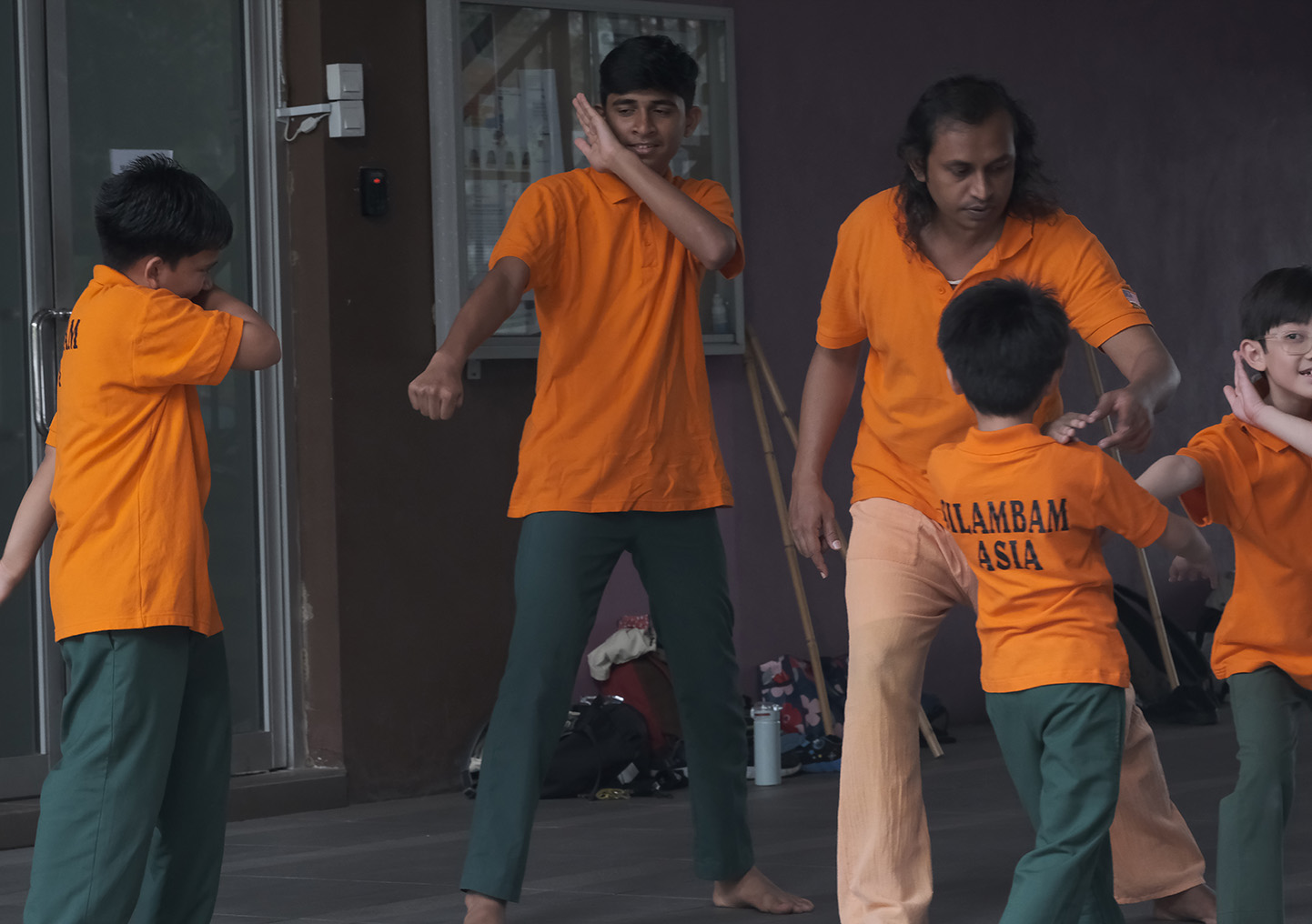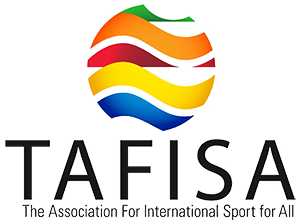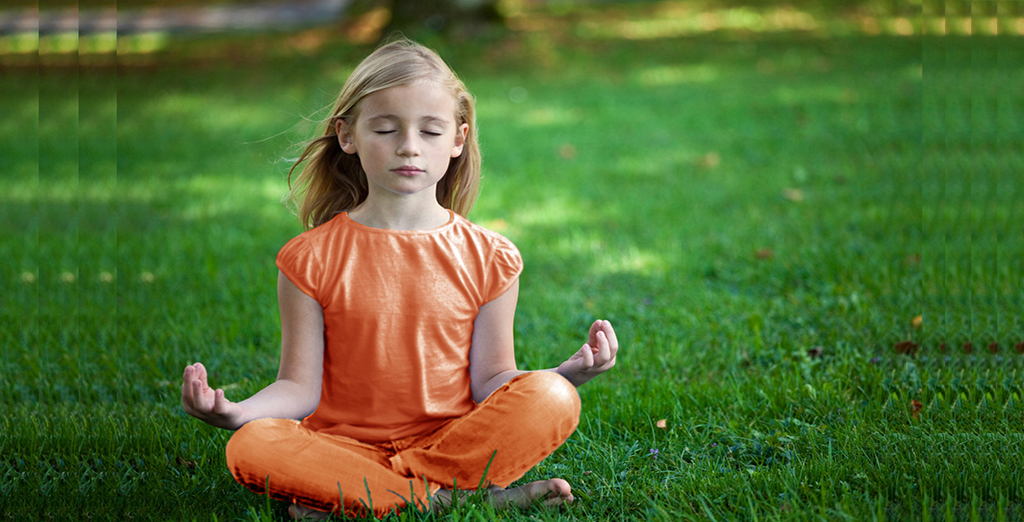
Silambam Mastery
Varmakalai
Varma Kalai - About
Bahasa Melayu : Varma Kalai / Malayalam : വർമക്കല / Telugu : మర్మయుద్దకళ / Français : not_available
Summary
Published: 14 June 2016 (Tue)
Last Updated: 29 June 2024 04:30 AM (GMT+8)
Varma Kalai ( Tamil தமிழ் : வர்மக்கலை varmakkalai, Malayalam : വർമക്കല varmakkala, Sinhala : මාරු කල maru kala, Telugu : మర్మయుద్దకళ marma vidya kala, Sanskrit संस्कृतम् : मर्म विद्य marma vidya ), is a martial art and esoteric healing art originating from ancient Tamil Nadu in South India. The Indian word with meaning literally translate as "The Art of Vital Pressure Points". Adi Murai / Marma Adi, it is an advanced element of the Tamil martial arts of Kuttu varisai ( Tamil தமிழ் : குத்துவரிசை ), Silambam and Kalaripayat.
Since 2014, our organization took several initiatives to educate the Siddha Medicine ( Tamil தமிழ் : சித்த மருத்துவம் ) application through the practice of health and physical exercise as part of the Indian traditional arts education program of Silambam Arts, Traditional Yoga, and Varma Kalai. This is to create public awareness and promote the importance of Siddha medicine to use as home remedies in daily life (as early prevention from diseases) rather than apply as disease treatment (after diagnosed).
There are many untrained and unqualified people pretending as Siddha medicine practitioners or Siddha doctors, setting up fake Siddha clinics for profit-making purposes, malpractices and abuse by using fake ingredients in the name of Siddha medicine that leads to wrong medicinal properties. These malpractices are very risky for the community and can destroy the true essence of the Indian traditional arts. It happens because the community never understands its functions, medicinal values, medicinal properties, and modern science works behind Indian Ancient alternative medicine (Siddha medicine). Silambam Asia took initiatives to provide necessary training on the Siddha medicine application by ties with other Indian traditional arts for students, trainees, teachers, and doctors, to help them understand the value of modern science hidden behind the Siddha medicine.
Varma adi or Marma adi
Varma adi or Marma adi ( "hitting vital spots" ) is a part of the art of healing and harming Varma Kalai ( Tamil தமிழ் : வர்மக்கலை , Telugu : మర్మయుద్దకళ ) Marma Vidhya, It is a component of adi murai "law of hitting" which is a martial art that teaches methods to attack pressure points of the human body. This system of marmam is part of Siddha Vaidhyam, attributed to the Tamil sage Agastya ( Tamil தமிழ் : அகத்தியர், Sanskrit : अगस्त्य, Telugu : అగస్త్య ) and his disciples. It is practiced in almost all parts of Tamil Nadu and in the Travancore region of Kerala. It is supposedly derived from traditional Siddha medicine. Indian martial arts such as Silambam, Kuttu Varisai and Kalaripayat explains "Adi Murai" and its component Marma adi were emphasize empty hand techniques.
Varma Kalai is also known by following names :
- Varma Kalai,
- Varmak Kalai,
- Varmakalai,
- Varmam ( Tamil தமிழ் : வர்மம் ),
- Varma Adi,
- Varma Sastra,
- Varma Vidya,
- Marma Vidya,
- Marma Kalai,
- Varma Kalari,
- Kalari Varma,
- Marma Sthanam ( Telugu : మర్మ స్థానం )
and many more.
In Malayalam, varmam is known as Marma / Marmam / Marma Adi.
Pressure points - Varma Varisai ( Full-details available at end of this page )
Varma adi recognizes 108 marmas ( lethal Varma points ), 12 Padu marmas ( death marmas ) and 96 Thodu marmas ( touch marmas ) and about 350 therapeutic Varma points within our body. There are also counter marmas to heal trauma to the marmas. Varma also known as Marma points which located at point of specific part of body surface whereby application of pressure or insertion of needles will affect the vital energy flow or Prana ( life ) along a complex system of subtle channels called Nadis. By using varying degrees of force to strike the body at different vital points, can produce astounding results. When used in warfare by a skilled combatant, these blows can cause instant death, great pain, paralysis or infection even delayed death. The results vary according to the power and velocity used by the combatant, subject to the timing of the day as well.
Common training in Varma Kalai
Terminology |
Methods |
|---|---|
| 01. Kai Murai | Hand / Finger Methods |
| 02. Seiyal Murai | Application Methods / Ways |
| TRAINING IN LEVEL 1 : Varma Varisai ( Understanding of Vital Points strikes / attacks ) |
|---|
♦ Padu Varmam – 12 with Mudras ( Varma Techniques )
♦ Adangal ( Releasing of Varmam / Recovery from unconscious ) -12 ( actually have 56 Adangal but reduced to 12 )
Varma Adangal, Bringing back to normal ( Marma Thiravukol ( method to open varmam ) ). While the Siddha's have mentioned a lot about the beating, push or touch in the Varmam to make a person incapacitated. In real life a person may get attacked accidentally in the Varmam and incapacitated. Siddha's have also mentioned the ways to bring back such affected person to normal. This is called Marma Thiravukol ( method to open varmam ) or Adangal or key to bring back to normal. A push, a touch or a beating in the relevant place, applying oils, medicines, administering medicines brings back the affected person to normal. This is possible to all Varmams.
+Usually Guru ( Aasan ) will teach to student which consist of 3 parts:
- Mel Adangal ( Top )
- Naduvu Adangal ( Middle )
- Kii Adangal ( Bottom )
♦ Podhu Adangal ( Common Release ) - 03
♦ Sarvaanga Adangal - 01
| TRAINING IN LEVEL 2 : Pormuga Varma Varisai ( Lesson for Vital Point attacks ) |
|---|
♦ Padu Varmam - 12 ( Deadly Points )
The meaning of Padu is nothing but death. Padu Varmam are highly dangerous. These are located in the front part of the body. A gentle touch or a push in these places may result death :
- Thilarntha Kaalam
- Natchathira Kaalam
- Sevi Kutri Kaalam
- Pedraei ( Pidari ) Kaalam
- Urakka Kaalam
- Sumei Varmam
- Ner Varmam
- Adappa Kaalam
- Urumi Kaalam
- Valia Athisurukki
- Siriya Athisurukki
- Kalladaikalam
♦ Por Varmam - 24 ( used in Combat / Self Defence )
Total : 36 Varmam Points
Total : 36 Varmam Points x 12 Thadupugal ( Blocks ) = 432 Varma Adigal ( Vital Attacks )
♦ Amrithanila ( Nectar placement )
This concept explains the effectiveness of attack on Varmam depends on the lunar movement. The Varma point keeps moving from toe to head and vice-versa with the movement of moon. The movement will be of X shape. The vital Varma points and the poison will travel in the opposite direction. Such effective points of each day are known as the Amrithanila.
Varmam Names
Published: 14 June 2016 (Tue)
Last Updated: 29 June 2024 04:30 AM (GMT+8)
Varma Kalai - Varmam Names
Varma Points |
in Tamil |
|---|---|
| Aanthai Kalam | ஆந்தை காலம் |
| Aattru Varmam | ஏற்று வர்மம் |
| Adappa Kalam | அடப்பக் காலம் |
| Amathu Varmam | அமத்து வர்மம் |
| Andu Varmam | அண்டு வர்மம் |
| Ani Varmam | அணி வர்மம் |
| Annan Kalam | அண்ணான் காலம் |
| Asaivu Varmam | அசைவு வர்மம் |
| Chankuthiri Kalam | சங்குதிரி காலம் |
| Cheerum-Kolli Varmam | சீறும்கொல்லி வர்மம் |
| Chevi-Kuthi Varmam | செவிக்குத்தி வர்மம் |
| Chumai Varmam | சுமை வர்மம் |
| Eanthi Kalam | ஏந்திக் காலம் |
| Erakku Varmam | இறக்கு வர்மம் |
| Hanumar Varmam | அனுமார் வர்மம் |
| Kachai Kalam | கச்சைக் காலம் |
| Kai Vellai Varmam | கை வெள்ளை வர்மம் |
| Kai Viri Kalam | கை விரிக்காலம் |
| Kaiketti Kalam | கைக்கெட்டி காலம் |
| KaiKoottu Kalam | கைகூட்டு காலம் |
| Kakattai Varmam | காக்கட்டை வர்மம் |
| Kal Vellai Varmam | கால் வெள்ளை வர்மம் |
| Kallidai Kalam | கல்லிடைகாலம் |
| Kampoori Kalam | காம்பூரிக் காலம் |
| Kandi Varmam | கண்டி வர்மம் |
| Kannadi Kalam | கண்ணாடி காலம் |
| Kannu Pugai Kalam | கண்ணு புகைக் காலம் |
| Kanthi Varmam | காந்தி வர்மம் |
| Kareeral Varmam | காரீரல் வர்மம் |
| Kasa Varmam | கச வர்மம் |
| Kathir Kama Varmam | கதிர்காம வர்மம் |
| Kathir Varmam | கதிர் வர்மம் |
| Kattu Varmam | கட்டு வர்மம் |
| Kazhaladi Varmam | கழலாடி வர்மம் |
| Kilimega Varmam | கிளிமேக வர்மம் |
| Kilipira Varmam | கிளிப்பிற வர்மம் |
| Kona Varmam | கோண வர்மம் |
| Kondai Kolli Varmam | கொண்டைக்கொல்லி வர்மம் |
| Kondodi Kalam | கொண்டோடி காலம் |
| Koombu Varmam | கூம்பு வர்மம் |
| Kundigai Kalam | குண்டிகை காலம் |
| Kuthikal Varmam | குதிகால் வர்மம் |
| Kuthirai Muga Kalam | குதிரை முக காலம் |
| Kuthu Varmam | குத்து வர்மம் |
| Kutti Kalam | குற்றிக் காலம் |
| Kuzhivu Varmam | குழிவு வர்மம் |
| Manthi Varmam | மந்தி வர்மம் |
| Manthira Kalam | மந்திர காலம் |
| Minvetti Kalam | மின்வெட்டி காலம் |
| Moorthi Kalam | மூர்த்தி காலம் |
| Moothira Kalam | மூத்திரக் காலம் |
| Mudakku Varmam | முடக்கு வர்மம் |
| Mudavu Varmam | முடவு வர்மம் |
| Mundellu Varmam | முண்டெல்லு வர்மம் |
| Mundu Varmam | முண்டு வர்மம் |
| Mundu Varmam (Kai) | (கை) முண்டு வர்மம் |
| MunSaruthi Varmam | முன்சருதி வர்மம் |
| Muttu Varmam | முட்டு வர்மம் |
| Nadodi Varmam | நாடோடி வர்மம் |
| (Naga) Kannu Varmam | (நகக்) கண்ணு வர்மம் |
| Nanku Kutti Kalam | நான்கு குற்றி காலம் |
| Natchathira Kalam | நட்சத்திர காலம் |
| Nattellu Varmam | நட்டெல்லு வர்மம் |
| Nema Varmam | நேம வர்மம் |
| Ner Varmam | நேர் வர்மம் |
| Ottu Varmam | ஒட்டு வர்மம் |
| Pada Varmam | பட வர்மம் |
| Pala Varmam | பால வர்மம் |
| Pallai Varmam | பள்ளை வர்மம் |
| Pandri Varmam | பன்றி வர்மம் |
| Pantha Kalam | பந்தக் காலம் |
| Patzhi Varmam | பட்சி வர்மம் |
| Peesa Kalam | பீசக்காலம் |
| Periya Athi Surukki Varmam | பெரிய அத்தி சுருக்கி வர்மம் |
| Pidari Varmam | பிடரி வர்மம் |
| Pin Saruthi Varmam | பின் சருதி வர்மம் |
| Poigai Kalam | பொய்கை காலம் |
| Poonoolu Kalam | பூணூலு காலம் |
| Porchai Varmam | பொற்சை வர்மம் |
| Poruthu Varmam | பொருத்து வர்மம் |
| Pozhivu Varmam | பொழிவு வர்மம் |
| Pusa Varmam | புச வர்மம் |
| Sadapira Kalam | சடப்பிற காலம் |
| Saruthi Varmam | சருதி வர்மம் (சுருதி வர்மம்) |
| Siriya Athi Surukki Varmam | சிறிய அத்தி சுருக்கி வர்மம் |
| Soondothari Varmam | சூண்டோதரி வர்மம் |
| Sundothari Varmam | சுண்டோதரி வர்மம் |
| Suzhukku Varmam | சுழுக்கு வர்மம் |
| Thavalai Varmam | தவளை வர்மம் |
| Thekshanai Kalam | தெட்சணை காலம் |
| Thilartha Varmam | திலர்த வர்மம் |
| Thirumi Varmam | திருமி வர்மம் |
| Thivalai Varmam | திவளை வர்மம் |
| Thudai Thatti Kalam | துடை தட்டி காலம் |
| Thumbi Kalam | தும்பிக்காலம் |
| Udal Sulukki Varmam | உடல் சுளுக்கி வர்மம் |
| Uppu Kutti Kalam | உப்புகுற்றி காலம் |
| Urakka Kalam | உறக்க காலம் |
| Uthira Kalam | உதிர காலம் |
| Valampuri Kalam & Edampuri Kalam | வலம்புரி காலம் & இடம்புரி காலம் |
| Vallurumi Kalam & Vellurumi Kalam | வல்லுருமி காலம் & வெல்லுருமி காலம் |
| Vasavu Varmam | வசவு வர்மம் |
| Velleral Varmam | வெள்ளீரல் வர்மம் |
| Virthi Varmam | விர்த்தி வர்மம் |
Types of Varmam
Published: 14 June 2016 (Tue)
Last Updated: 29 June 2024 04:30 AM (GMT+8)
♦ Thodu Varmam ( Minor Varmam points which activated by fingers / hands ) ( Tamil தமிழ் : தொடு வர்மம் - Totu Varmam )
96 Vital Points triggered by a touch. Not deadly, but will affect the victim by disabling the body, organ movements and function. A touch or a small push with a finger or a beating in these places make one faint with many side effects like fits etc. In some cases the organs will get affected for a specific period such as 15 days, 30 days, 45 days etc.
Thus there are 108 Varmam mentioned by Siddha's in a human body. They are located in the places such as :
Vital Points |
Part of Human body |
|---|---|
| 37 places | Places above neck ( கழுத்து மேலே புள்ளிகள் - Kaḻuttu mele ) |
| 34 places | Places below neck ( கழுத்துக்கு கீழே - Kaḻuttukku kiḻe ) |
| 16 places | Places back of the body ( உடல் பின்னால் - Utal piṉṉal ) |
| 11 places | Places in legs ( கால்கள் - Kalkal ) |
| 10 places | Places in hands ( கைகள் - Kaikal ) |
| 108 | TOTAL |
♦ Padu Varmam ( Major Varmam points which activated by fingers / hands due to injury)
12 Vital Points that are fatal, causing immediate, severe effects upon the victim.
♦ Thattu Varmam ( Varmam points which stimulated by tapping / blows ) ( Tamil தமிழ் : தட்டு வர்மம் - Tattu Varmam )
Decisive Vital points in 8 places in the chest and abdomen area that are used by the master. These are kept confidential until the master pass on the knowledge to the selected disciple.
♦ Urinjal Varmam ( Varmam points which stimulated by sucking before/after use Uuthu Varmam )
"Receiving methods"
♦ Uuthu Varmam ( Varmam points which stimulated by blowing using mouth ) ( Tamil தமிழ் : ஊது வர்மம் - ūtu Varmam )
"Sending methods"
e.g. Decisive Vital points that are used by the master. Master ( Aasan ) chew small piece of dry ginger and blow the air into nose and ears of patience to help reduce some Varmam related problem. Betel leaf air also can be used if dry ginger not available, because both have anti-vayu property. Ginger air will dislodge the stagnant vayu and stimulate good energy flow through whole body, and thus patience will become conscious. This blowing method used because some Varmam points can't be reach in-depth by finger / touch. These are kept confidential until the master pass on the knowledge to the selected disciple.
♦ Nakku Varmam ( Varmam points which stimulated by licking ) ( Tamil தமிழ் : நக்கு வர்மம் - Nakku Varmam )
e.g. Using licking method to reduce hard/heavy pressure on Varmam points. Decisive Vital points that are used by the master. These are kept confidential until the master pass on the knowledge to the selected disciple.
♦ Thodu Varmam ( Varmam points which stimulated by touch ) ( Tamil தமிழ் : தொடு வர்மம் - Totu Varmam )
♦ Parechal Varmam
♦ Koochal Varmam
♦ Sumbana Varmam
♦ Thadavu Varmam / Thadavu Murai / Valippu ( Varmam points which stimulated by rubbing / massage either/neither with herbal oils )
e.g. If cramped/twisted muscles, rubbing message will be used to ease the pain. Some appropriate herbal oil/ointment -siddha/ayurveda remedies (which appropriate with Vatha/Pitta/Kabha of varmam attack) were also used for best stimulation/effect. Application of herbal oil/ointment usually done at exact opposite side of body/part of pain to counter the varmam points damages. Chakra energy flows is very important while giving this massage. After completion of Thadavu Murai, pulling the patience fingers and toes is essential to make blood flow smoother to area of pain. Appropriate herbal medication may given to patience to consume in order to reduce further pain/swelling or for better healing.
♦ Thuppu Varmam ( Varmam points which stimulated by spitting the herbs )
♦ Sunonitha Varmam
♦ Sukkila Varmam
♦ Choondu Varmam
♦ Nooku Varmam ( Tamil தமிழ் : நோக்கு வர்மம் - Nokku Varmam ) and Meitheenda Kalai / Meitheenda Kaalam
Triggering vital points by focusing / staring / concentrating on the target. It takes several years of practice for 1 to become an expert in Nooku Varmam. It is said Nokku Varmam and Meitheenda Kaalam are so highly vulnerable so that a mere gaze at these areas of the body itself will do to down the man. In olden days Aasan had used Nokku Varmam and Meitheenda Kaalam to control enemies and wild animals.
Classifications of Varma Points
Human body is divided into 5 areas in which Varmam ( Varma points ) and there are 108 Varmam's ( Vital points ) :
Vital Points |
Part of Human body |
|---|---|
| 25 | From Top of the Head till Neck ( தலை மேல் கழுத்து வரைக்கும் - Talai mel Kaḻuttu Varaikkum ) |
| 45 | From Neck till Naval Point |
| 9 | From Naval Point till Anus |
| 14 | Arms |
| 15 | Legs |
| 108 | TOTAL |
The same 108 Varmams are classified under different categories. One such classification is based on 12 nerves ( or a meridian channel ) in the nervous system. Each meridian channel consists of 1 Padu Varmam and 8 Thodu Varmam ( Tamil தமிழ் : தொடு வர்மம் - Totu Varmam ).
Vital Points |
Varmam Type |
|---|---|
| 96 | Thodu Varmam ( Tamil தமிழ் : தொடு வர்மம் - Totu Varmam ) |
| 12 | Padu Varmam |
| 108 | TOTAL |
The number of Varmams (108) various between various schools of Varmam.
Based on Indian Astrology :
Vital Points |
Varmam Based On |
|---|---|
| 27 | Stars ( Hindu Astrological ) |
| 30 | Lunar |
| 35 | Padu Varmam |
| 92 | TOTAL |
Based on the text Naramparai, written by Kumbamuni Siddha :
Vital Points |
Classification |
|---|---|
| 18 | Padu Varmam |
| 96 | Thodu Varmam ( Tamil தமிழ் : தொடு வர்மம் - Totu Varmam ) |
| 8 | Pakka Varmam |
| 86 | Narambu Elumbu Varmam |
| 45 | Maru Varmam |
| 253 | TOTAL |
Based on yet another classification :
Vital Points |
Classification |
|---|---|
| 65 | Vata Varmam (Air) |
| 24 | Pitta Varmam (Heat) |
| 6 | Kapha Varmam (Cool) |
| 12 | Concealed Varmam |
| 107 | TOTAL |
According to Vaidhiya murai ( Healing therapy under Siddha medicine ) the vital points are explained as :
Vital Points |
Functions |
|---|---|
| 64 | Vadha Varmam |
| 24 | Pitha Varmam |
| 6 | Kaba Varmam |
| 6 | Ul Varmam |
| 8 | Thattu Varmam ( Tamil தமிழ் : தட்டு வர்மம் - Tattu Varmam ) |
| 108 | TOTAL |
108 Varmams Specification
Varmam points are the vital points which present all over the body; many literatures quoted that there are totally 108 varmam points. They are in the pathway of dhasanaadi, dhasavayu, saram. They pass the pranan energy from sole of the foot to universe through the nose. The naadis present in the forehead are 7000, in both ears 3300, in both eyes 4000, in nose 3380, in pidari and shoulder region 6000. According to "Narambu Vagada Soothiram Thiravukol", literature's uniqueness stands for it's quotes regarding of:
- 32 Urruppukal
- Narambukal
- Narambu Suzhikal
- Narambu Mudichugal
- 72,000 Nadikal
- 64 Kalaikal (with several sub-branches of unique Kalaikal)
- Aagaa kaalam
- Parisothanai kaalam
- Mudiyatra kaalam
- Meitheenda kaalam
- 4448 Noikal
- Sara Otta Pathaigal
Those varmam points mentioned in the text with their locations are in Paripashai (hidden meaning), so this art will be learnt thoroughly from Aasan (Masters/Gurus), a therapist can perform a Varmam treatment in a right way. Those Aasan will not teach this art to every one , as they will select the suitable sichiyans (students), after many tests in considerable days to ensure their saatvic characterness and obediency. There are 12 Padu varmam, 6 Ull varmam, 8 Thattu varmam and 96 Thodu varmam, in this literature as brief details were shown below (in alphabetical order).
| Padu varmam: 12 According to Varma sastras these are 12 in number. These points are mainly situated in the pathway of Vagus nerve, main vessels and internal organs. If a Paduvarmam point hit by humans or weapons the man will die immediately or after some time. If the mathirai level is ¾ or 1 the man will definitely die. If the mathirai level is ¼ or ½ we can save the man by proper treatment and medication. By treatment we can save the life but after some years it may create some problems in our body, by taking medicine for Pazhaya varmam we can definitely save the life. The first varmam point that created in our body Thilartha kaalam, it is in the literature of Narambu vagada suthira thiravugol, varmakandi, varma chuthiram. But some other literatures noted that Uchi padhappa kaalam is the first point, the literatures are Varma beerangi, Varma kannadi. These points are very important, because we can calculate the other varmam points by these points only. |
|---|
confound points (updating in progress): - Chevi kuthi kaalam – back of the ear lobule (on the stylo mastoid foramen) - Kallidai kaalam – centre of the testis for men, centre of clitoris for women - Thummi kaalam – inter clavicular notch |
| Ul varmam: 6 These are totally 6 in numbers. These are very dangerous. If these points are damaged they will cause many sever problems, and after certain number of days the man will die. If the point is injured the man will develop psychic problems. They may cause the following problems deaf, heart failure, lung failure, Asthma, Ascites. The five sense organs will be affected by diseases. |
|
| Thattu varmam: 8 They are eight in numbers. These points are mainly used in therapeutic aspect only. The points are situated in the Puratharai 8. If these points are injured It will mainly affect the kalai ottam. That will cause dyspnoea. The pitham will increase if the point injured. The eight points are: |
|
| Thodu varmam: 96 They are 96 in numbers. All the points are not dangerous, but some points show symptoms like Padu varmam injury. Some points will reduce the number of days in life; some points causes permanent disability or diseases. Some points will cause small injury and after some time it will rearrange the sara and kalai ottam itself. For example in ancient age siddhars used Urakka kaalam for anesthesia purpose during surgery. The mathirai to be given in the point for anesthesia was according to the type of surgery. The point induces the sleep according to the mathirai level. After some time the patient will wake up normally. In martial arts the point was used for temporary loss of coordination. The varma points present in the body are 108, head and neck are 25. A song from a literature which giving details about the location of the points in the head and neck "Thaanana thalai naduvil kondaikolli "Kaalamam adhukkum oru iraikkum keel "Ennave idhukkum irandiraikkum keele "Kuriyana cheviyin keel angulame naalil |
confound points (updating in progress): Kondai kolli – in the vertex of the skull Cheerungolli – 8 fingers from the back of kondai kolli Pidari varmam – 4 fingers from the back of cheerungolli Charidhi varmam – 8 fingers from kondaikolli in the lateral side of the skull above the ear Porchai kaalam – 2 fingers below the charidhi varmam Kuthi kaalam – 1 irai below to porchai kaalam Chevi kuthi kaalam – back of the ear lobule (on the stylo mastoid foramen) Poigai kaala varmam – 2 irai above chevikuthi Natchathira kaalam – near the lateral end of the orbit of the eye Kaamboodhati kaalam – 2 irai below the natchathira kaalam Moorthi kaala varmam – 3 irai near to kamboodhari kaalam in the medial side Thilartham – in the centre between the 2 eye brows Min vetti kaalam – ½ irai below thilartham Mandhira kaalam – it is situated between the eye and nose Neruppu varmam – in the centre of the vertebral column Pachi varmam – ½ irai below neruppu varmam Kannadi kaalam – in the centre of the nose Bala varmam – centre of the neck in the lateral aspect Sundigai kaalam – near bala varmam Kona varmam – near sundigai kaalam Udhira kaalam – four fingers below chevikuthi varmam Ottu varmam – in the centre of the mandible Simai varmam – 4 fingers below sangu thiri kaalam |
Learning Varmam - Traditional Way
Published: 14 June 2016 (Tue)
Last Updated: 29 June 2024 04:30 AM (GMT+8)
Varma Student
Most of the time, student they will end up with "fake" Varma teachers. Varma student has to search for a proper Aasan and the learning process will take for at least 12 years, a student might know 100++ of the vast knowledge of Varmam. To learn more vast or in-depth, student might have to find different Aasan. A lot of time and money has to be spent in learning. May be for that reason, Varma Kalai is not vastly spread.
Learning Varmam - Traditional Way
The student, who wants to learn Varmam, should meet the Gurukkal ( priest ) on a new moon day with Guru Thachinai and Kaanikkai ( fees ). Gurukkal will perform pooja and rituals to either Saint Agasthiyar / Saint Bohar and then the Kaanikkai will be offered to the Gurukkal. Later Varma Aasan ( Varma teacher ) will get Kaanikkai. Then, Aasan will teach the rituals to worship sathguru's like Agasthiyar and Bohar. At that time, starting prayer method ( Vananggum Murai ) in Silambam and the Varmam point 'Kumbidu Kaalam' will be taught. At the end of the first day's lessons, student has to touch the feet of Aasan. By doing so, student will get blessing of a touch. When student gets blessings, the student will be taught about another Varma point known as 'Bhoomi Kaalam'. Everyday, the student has to mentally feel both Kumbidu Kaalam and Bhoomi Kaalam. This is the starting stage of learning Varmam.
Then student will be learning Martial Arts between 3 to 5 years. During that period, Aasan will observe characteristics of the student and subsequently will teach student about Varmam points. It is not easy to remember the Varma points. Aasan will not apply any pressure on those Varma points. Aasan will dip a small wooden point in rice flour and touch the Varma points on the student's body, just sufficient enough to make impression.
The Varmam lessons taught based on Aasan-Student relationship. Only after 7 years of study, the student will be taught about Varma Thiravukol ( method to open varmam ) ( key to unlock ). Upon completion of 12 years studies, after taking vows, student will be secretly taught about the inner Thiravukol's and Thiravukol's that shows eternity. After that phase, he will be given 'Guru Nilai Theekshai' ( blessings to be teacher ) and student will be announced as a Varma Aasan. Even after became Aasan, the relationship between the Aasan and student ( himself / herself ) will continue forever.
Requirements for training
Varma Kalai teachers are highly selective in their choice of students. Disciples must meet a number of criteria; beyond martial arts competence they are required to have an understanding of :
- Biology
- Mathematics
- Political science
- Astronomy
- Physics
- Chemistry
- Saamuthriga Lakshanam
- Yoga
- Military tactics
- Horsemanship
- Elephant riding
- Charioteering
- Hindu philosophy ( Saiva, Vaisnava, Saktha, Koumara, Boutha, Samana ) etc.
The Varma Kalai martial artist is not allowed to teach the art to others until he receives Deeksha from his Aasan or Periyaasan as in recognition of him as an Aasan.
Hearsays are that the rules were followed sincerely without exception, everyone who wished to learn the art were not qualified to learn. It was taught only to selected individuals who qualified but again all who learned does not qualify to become an Aasan. Also the Aasans and Periyaasans did not pass on few techniques as they never met qualified diciple. It is being said that causes such led to the loss of many great techniques, few Aasans who spoke to media deny that thought. There is also a belief that the art was kept hidden for centuries for various reasons, it seems that Aasans agree to that but there is no sound record on what facts set the art hidden.
Qualities in Varma Aasan
Knowledge of Varma Kalai ( the art of Varmam ) is passed through several generation. Person who mastered this art are called "Aasan" ( which means Master / Instructor ). Varma Aasan are extremely calm in nature; never show anger even by words of mouth and will be very devoted in God. Aasan usually hesitant to reveal their knowledge to anyone, very humble and not pride. They show their special talents only to selective students.
To become a good Varma Aasan , one should learn :
- Martial Arts ( Silambam & Kuttu Varisai )
- Siddha Medicine
- Knowledge of Herbs
- Chanting Mantra
- Tantric practices
- Astrology
- Anga Sasthra
- Boomi Sasthra
- Vaastu Sasthra ( study of building architecture, similar to Chinese Feng Shui )
- Horai
- Nimitha Sasthra
- Thoni Sasthra
- Dharga Sasthra
- Kama Sasthra ( sexuality ) ( Tamil தமிழ் : காமசூத்ரா )
- Navaratna ( precious stones )
- Saranool ( breathing )
- Soola Nilai
- Yoga
- Psychology
It requires at least 12 years to learn these arts.
History ( வரலாறு - Varalaru )
Published: 14 June 2016 (Tue)
Last Updated: 29 June 2024 04:30 AM (GMT+8)
The origin of the art dates back to thousands and thousands of years. In ancient Tamil history, there were mentions about 18 saints called Siddha's. Saint Agasthiyar was the outstanding among them, who lived in the Agastya Hills of the Western Ghats surround by the southern districts Tamil Nadu and south Kerala. Saint Agasthiyar's contribution to Varma and Medicine is glorious. It is wonder that without modern scientific inventions like X-ray and Scanning, the Saint accurately pin pointed human anatomy. His original literature is in Tamil language, graded as classical language by the Govt of India. The original script was written in palm leaves and kept secret for generations. Due to the vulnerability of the art, it is taught only to the blood relations. Siddha doctors are still using this literature for studies. Besides Saint Agasthiyar other Siddha's like Saint Pulipani and Saint Bohar also contributed to Varmam. They have recorded everything in palm leaves.
Varmakalai ( the art of varmam ) is considered to be very auspicious. It is believed that Lord Siva taught this art form. Indians overwhelm by saying that all rare art forms originate with roots from God. For example, epics illustrate that Tamil and Sanskrit have their origin from the sound of the 'Oodukkai' ( musical instrument in the hand of Lord Siva ). bharata Naatiyam ( the traditional dance ) originated from Lord Siva. Kama Sutra ( the art of love and sex ) originated from Lord Siva. So it is of no surprise when it is said that varmakalai, the rare art that saves humans from diseases, also originated from Lord Siva.
" தேறவே சிவன் உமைக்குச் சொன்ன போதம்
ஆறாமல் நான் அறிந்து இந்நூல் சொன்னேன் "
( ஒடிமுறிவு சரசூத்திரம் 1500. பா. 833 )
According to the above versus ( Odivu Murivu Sara Suthram 1500 Verse 833 ), Lord Siva taught varmam to his wife Parvathi; later Parvathi taught varmam to their son Murugan. While disguised as an old man, Murugan then taught this art to the sage Agasthiyar, foremost of the Siddhar's, during the times of Sangam Literature, who then recorded it and disseminated the skill among his students. Agasthiyar transferred the knowledge of this art to other Siddhar's and he also wrote treatises on this art in Tamil. The presence of shrines to Agasthiyar in Courtallam suggests that he researched the art there. But the original texts ( and their copies ), directly written by siddhas, are not available now. Saints who have grasped the meaning of the siddhas sayings have given a poetic form, which is used in modern day learning. So far, around fifty thousand ( 50,000 ) songs are available. The narrated history has been mentioned in the 41st prose of " Kai Mathirai Thiravukol " as follows :

" பண்பாக அகத்தியனார் . ராமதேவர்
பணிவாக போகமுனிவர் தானும்
பருவமாய் மனித
The above narration ( Kai Mathirai Thiravukol Verse 41 ) says, cannot be merely considered as a made-up story. One of the names that denote varmam is 'Siva'. Another name that denote varmam is 'Vasi', which means air. If you repeat 'vasi' continuously, you can hear 'Siva'. 'Sivam' means life. That is why Thirumoolar preached the philosophy of 'Love is Sivam' ( Love is Life ). One of the current available texts 'Sarasuthram' gives the criteria for teaching varmam to eligible students.
" ஈவது தான் யாருக்கென்றால்
சிவயோகிக்கு தான் " ( பா. 4 )
The above versus ( Sarasuthram Verse 4 ) says that a varmam teacher should teach varmam only to a 'sivayogi'. Sivayogi is the one who loves all life forms. In all the varmam texts written since Thirumoolar till ones in 18th - 19th century, varmam is spoken along with sivam.
The history that is said so far has been taken from epics. In reality, varmakalai might have its roots in self-defense martial arts. It is the tactics man might have learnt by observing birds and animals. In Kalari ( Defense Varmalogy ), practiced in southern Tamil Nadu and Kerala, various forms like Elephant Form, Tiger Form, Fox Form, Lion Form, Hanuman Form, and etc. are still in use.
In cockfight, to improve the fighting spirit, the owner of the cock will massage the back of the cock. This looks similar to how now a days the teacher gives a pat on the student's shoulder to encourage him or her.
From the medieval period, the ornaments worn by man in the ears, fingers, legs and foot, knowingly or unknowingly gave him health and energy. The body piercing done in the name of god also helped him to improve his life. Similar to how circumstances helped him to learn the about various parts in the body that helped him to improve the health, he also learned about the parts that caused illness. He used this knowledge to attack his enemy and create damage. On the other hand when he got hit, with spiritual thoughts, he cured himself by tuning the points that revived the good health.
Though he could command victory over his enemies, he also performed rituals and took the help of 'Kalari Moorthy - Kali' god. Also to save the life of the people, who were injured by his enemy, he took the help of the god 'Kalari Moorthy - Sarabesvarar'.
Hence, for the growth of varmakalai, mankind's capability, thinking process and action played a dominant role. Our ancestors invented this art to help the mankind. It is our duty to preserve this rare art.
Though Varma Kalai has its own form of katas and procedures, it was closely assorted with Silambam's component
Kuttu varisai and Kalaripayattu. Knowledge of Varma Kalai was considered vital in both arts to become a Grand Master. The teachers were called as Aasan ( Tamil தமிழ் : ஆசான்) and the grand masters were called as Periyaasan ( Tamil தமிழ் : பெரியாசன் ) or Iyan ( Tamil தமிழ் : ஐயன் ).
Historically, Varma Kalai has been one of the arts taught to those of royal blood. However, even royalty were required to pass the stringent requirements for discipleship. The schools received nivandhanams ( donation with high respect ) from the Kings of Tamil Kingdom (Chera, Chola, Pandya and Pallava. Aasan and Periyaasan of Varma Kalai were highly respected.
The art was taught only to selected individuals, but due to the strict requirements for new students it never gained large numbers of adherents. Due to its secretive nature, Varma Kalai remained largely unknown even in India until the release of the movie Indian, in which Kamal Haasan played the role of a Varma Kalai expert. The film's popularity generated a resurgence of interest in the art.
Currently Varma Kalai is practised in Tamil Nadu as Kuttu varisai and in Kerala as Kalari training.
Introduction to Varmam
The points where life force resides and flows in the human body are known as varmam. Varmam also means where breathing enery resides in the body ( Vaakata Nithanam : Verse 31 ). Varmam are scattered over various parts of body like in nerves, nerve joints, bones, muscles, ligaments and inner organs.
Based on where varmam is located in the body, it has gathered various names like Vasi, Puravi, Kaalam, Uyir, Mayakkam, Pranan, Kalai, Suvaasam, Saram, Yogam, Param and Sivam. This has been mentioned in the Tamil text, Vaakata Nithanam.

Based on this song ( Vaakata Nithanam Verse 350-30 ), the word Varmam referred to flow of life force in relationship with breathing. In Malayalam, Varmam is known as Marmam.
| Data Arrangement, Technical Arrangement & Graphics |
|---|
| ♦ Guruji Murugan Chillayah - Silambam Asia |
| References ( About Varma Kalai ) |
| ♦ Thirumoolar Varmalogy Institute, India |
| ♦ Book of Ben Stevens "From Lee to Li", HarperCollins 2009 ISBN 9780007347414 |
| ♦ Sacred Books of the East series edited by Müller ( 1879 to 1910 ) |
| ♦ Ralph T. H. Griffith ( English translations of the four Saṃhitas ), published 1889 to 1899 |
Silambam Asia (SILA) is in official partnership with the United Nations Sustainable Development Goals (UN-SDGS) to preserve and safeguard the Indian traditional arts, sports, cultural, and educational content of Silambam at the international level.
Silambam Asia plays active roles as an international organization for governance and sustainable development in the Indian traditional arts and sports for education, health, fitness, culture, nature, climate change, recreation, and dissemination of all these related information. Thus, it is vital to provide expertise for members by providing training, research, revive, rejuvenate, retain, and restore.
The mission of Silambam Asia as an umbrella organization of the World Silambam Association (WSA) is to provide effective international governance by constantly improving technical rules and regulating Silambam competitions or participation in international events or sporting arenas to be recognized as an Olympic and Paralympic sport in the near future.
Silambam Asia - Introduction
Indian traditional arts and sports for education, health, fitness, culture, nature, climate change, recreation, and dissemination.
Video content with development work, achievements and silambam history.
We Support






Make A Difference
We always encourage everyone to join us. Get in touch with us for more support.


